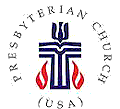A few years ago I went to a fundraiser for a local charity with some of my church members. It was sponsored by one of those groups that does paint nights, where you start with a blank canvas, and then an artist guides you step by step through a series of strokes, one section at a time. By the end of the night, viola!! You have a beautiful painting that looks like you knew what you were doing . . . most of the time at least. Painting is not my skill set, so I was rightly apprehensive about this endeavor, but I was assured that it would be fun regardless. I’d seen amazing results from friends, posts of pictures of scenic skylines and still life. The picture for the evening was relatively simple, and I picked up a paintbrush and tried very hard to follow what the leader was both saying and showing. Here is my end result. Not too bad actually. Definitely something I would never have been able to do on my own, though, even if I had seen the sample image to copy. But, when guided through it step by step, I was able to produce something that looked halfway decent. The key, I learned, was not necessarily to get ahead of myself, but instead follow the artist leading me, offering the next step and gently suggesting edits for when I had missed the mark. The end result came about because I was willing to trust the process.
In many ways, this is similar to the illustration Jesus uses in today’s passage. He speaks about the growing process of a vineyard, the step-by-step work of the vinegrower that is necessary in order for the end result to be good. Just as the artist leading us didn’t just hand us some paint and tell us to go to town, the vinegrower doesn’t just toss out some seeds and hope for the best. It takes time, tending and pruning, attending to different growth needs, and trust in the process. While not a perfect metaphor, it is a beautiful and complex one with many applications. This week I spent a little time looking at some comprehensive videos produced by the Monticello Wine Company about a year on the vine. It was fascinating. One of the introductory notes from the narrator was “the key to great wine is great fruit[i].” That is where the vinegrower puts their attention if they want to be successful. It is a quite lengthy process, too. Did you know it can take up to three years before a grapevine will produce fruit that is even worth considering to be made into wine? It’s fascinating timing considering this story, as its assumed Jesus spent roughly three years in ministry. What is more, many vineyards wait another two or more years to reach optimum quality. So perhaps, with this text, Jesus is helping to prepare the disciples for continued maturation by setting them up for a process through which they might continue to grow, and hopefully bear good fruit.
This text comes in the midst of his final discourse, or teaching, to his disciples, and he utilizes a common image of the day – the vineyard – to help the disciples understand what living as Christ’s people would look like. It is important to note that this is not just any parable or allegory, but rather is what is known as:
a mashal, a Semitic form that includes and image and its application to real life[ii].
Such a format would have been common in the Jewish religious tradition, as evidenced by its recurring presence in the Talmud. As Osvaldo Vena summarizes:
The vine was a common image used in the Hebrew Bible to speak of Israel as God’s people and conveyed the ideas of divine love and divine judgment. We can see this in Isaiah 5:1-7, the song of the unfruitful vineyard, where instead of grapes (justice) God finds wild grapes (bloodshed). The same idea is present in Jeremiah 5:10 and Jeremiah 12:10-11, but not so in Isaiah 27:2-6, where a reversal of the earlier song occurs, and now Israel is depicted as a fruitful vine[iii].
With such a reference, Jesus would have tapped in to the richness of the tradition with such an image, interpreting it in a new light for his disciples. The vinegrower is still God, but the vine is no longer Israel; it is Jesus. Again, the gospel message expands a far and as wide as the vine can grow. The writer of the gospel of John masterfully crafts the image of something well known in order to bring deeper understanding. Jesus Christ changes everything, and it is connection to him that will bring life, new life, life abundant. This text is one more opportunity for the disciples to root themselves in Christ and prepare for the good news that is to come with the resurrection in just a few more chapters.
The same message is true for us today, as those who seek to follow Christ. We often comment that we want to “grow in faith” or “bear good fruit,” and texts like this one help us remember where to start. We need to be on the vine, connected to Jesus. To put ourselves in this position, the one that will help us grow, is not without risk or challenge. The imagery reminds us that on the vine we will be subject to pruning. Now, I don’t think this means we will be cut off from the vine itself, but the parts of us that aren’t bearing fruit may need to be trimmed away in order for us to truly thrive. That is part of the work of discipleship, as we let go of those things that are not bringing us life or drawing us closer to God, creating space in our lives that growth might happen. In another part of the video from Monticello, the grower notes that one of the things that often contributes to growth is stress. That’s right, stress. In response to stress, the plant will often focus its energies on its progeny, the grapes, to make them as desirable as possible to birds and bees, in order to survive. Likewise, we might note that in our own lives of faith, it might be in times of stress and change, both positive and negative, where we experience the greatest amount of growth in our relationship to God. So perhaps, we might benefit by putting our lives of faith under a bit of examination and open ourselves up to processes of pruning in order to grow. Change certainly won’t be easy, but it may just be what we need to help us bear the best fruit.
This text invites us to trust in the process, even when it is difficult and takes us out of our comfort zone. To do so means we must be brave. Consider this poem by Micky ScottBey Jones:
Together we will create brave space
Because there is not such thing as a “safe space” –
We exist in the real world
We all carry scars and we have all caused wounds.
In this space
We seek to turn down the volume of the outside world,
We amplify voices that fight to be heard elsewhere,
We call each other to more truth and love
We have the right to start somewhere and continue to grow.
We have the responsibility to examine what we think we know.
We will not be perfect
This space will not be perfect.
It will not always be what we wish it to be.
But
It will be our brave space together,
And,
We will work on it side by side[iv].
This should be our vision for the church; a brave space in which we might be “on the vine” together, being pruned and growing in faith all at the hand of God through the life-giving vine of the Holy Spirit. That is the image I hope we might see when we gather here. This weekend our incoming officers spent time together, learning and laughing and preparing for another year of leadership with our returning officers. We made new connections with each other, and I hope with God as well. In one of the videos we watched, we were reminded that at the heart of what it means to be Presbyterian is that we do this thing called faith together. The good news is, that work is never done alone. I have yet to see a vineyard with only one little plant. There are rows and rows of them, with buckets full of fruit that are smashed together to create a delicious end result, whether it’s the Welch’s in our communion cups or your favorite vintage in the cellar. Collectively, we are a vineyard, growing together in Christ. We are called into connectional relationship with one another, and at the root of it all, if we have any hope of thriving, is our individual and communal relationships with Christ, who is the head of the church. It is Christ who invites us into this intertwined relationship, just as he invited his followers long ago as recorded in John 15. So let’s join together, on the vine, and be bearers of good fruit for the glory of God, who planted seeds in us long ago, and isn’t done tending to us. Amen.
~Rev. Elizabeth Lovell Milford
April 29, 2018————————————————————————-
[i] “Making Wine: In the Vineyard – Anatomy of a Grapevine,” Monticello Wine Company, posted February 9, 2016, https://www.youtube.com/watch?v=9aCFjEc1rgY, accessed 4/25/18.
[ii] Osvaldo Vena, “Commentary on John 15:1-8,” Working Preacher Website, April 29, 2018, https://www.workingpreacher.org/preaching.aspx?commentary_id=3631, accessed 4/25/18.
[iii] Ibid.
[iv] Micky ScottBey Jones, “An Invitation to Brave Space,” The peoplessupper.org, https://static1.squarespace.com/static/595e51dbd1758e528030285b/t/5978dca7d7bdcee0e2be6a99/1503506626330/FAQ-brave-space.png, accessed 4/25/18.



